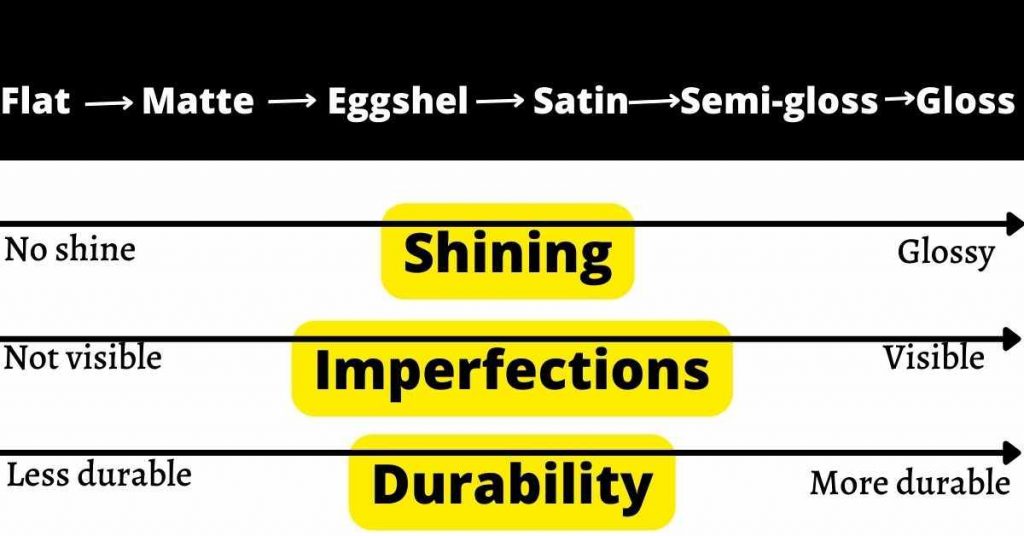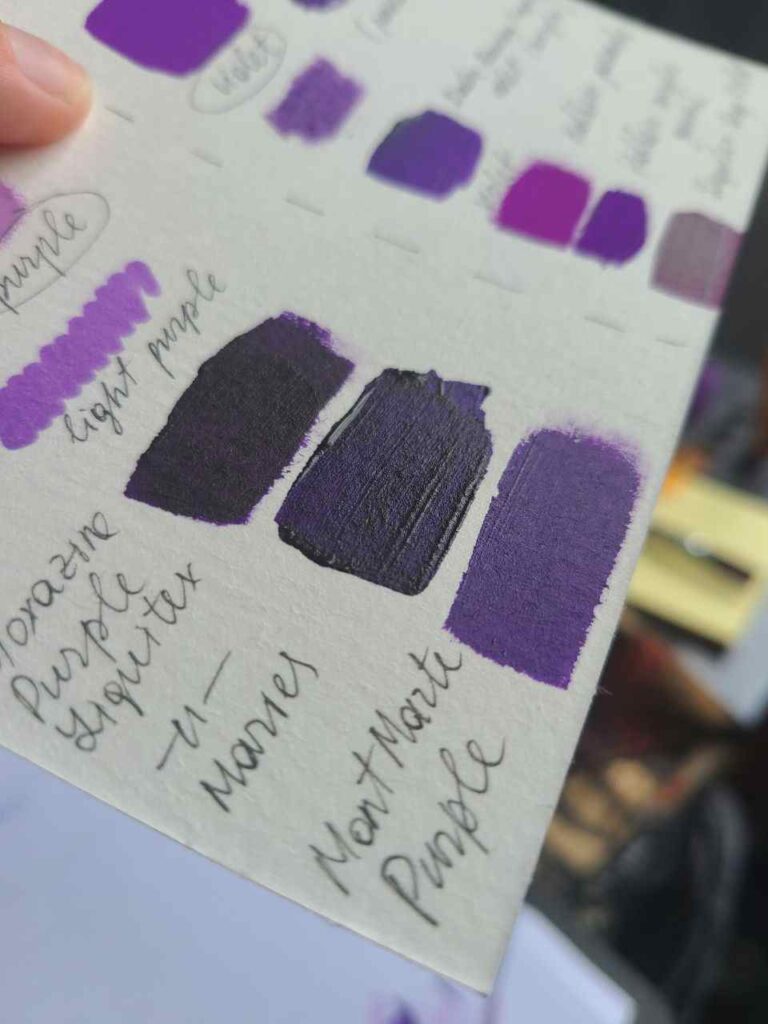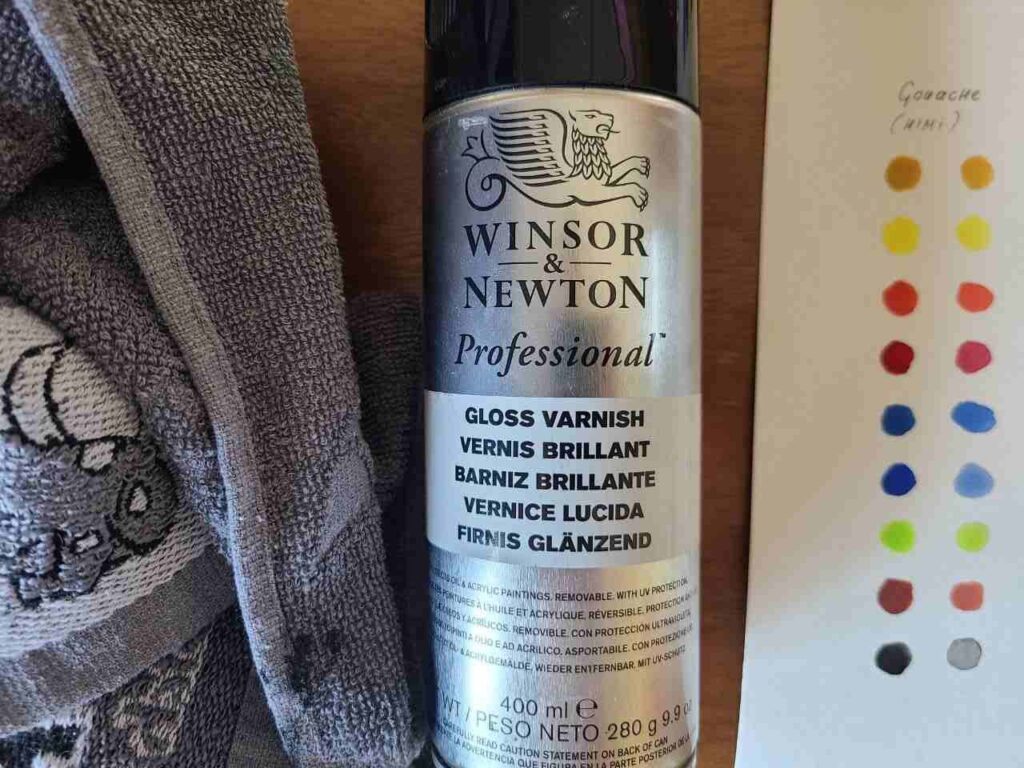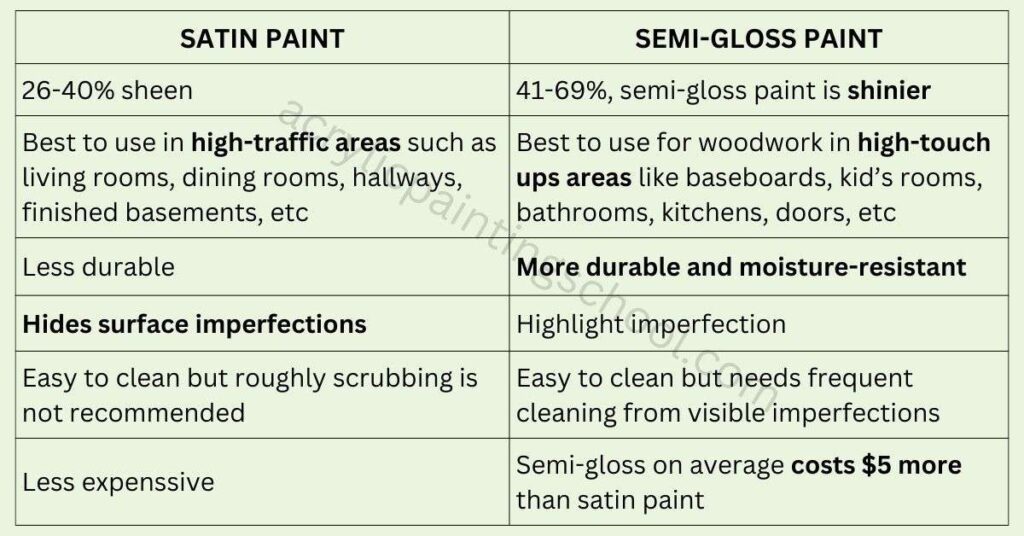Last Updated on March 22, 2024 by Masha Eretnova
Picking the best paint sheen makes a big difference for your interior walls or art. Many are deciding between satin vs semi gloss paint among those multiple paint finishes.
After all, it’s a tough choice to decide. So let us walk you through to learn more about the differences and when it’s best to use semi-gloss and satin paint.
Satin paint has a lower sheen compared to semi-gloss paint. This makes satin paint’s light reflection softer, and better to hide imperfections. Satin’s best to use in high-traffic areas such as family rooms, hallways, and living rooms. Meanwhile, the semi-gloss finish has more sheen and is more reflective. Semi-gloss paint is more durable than satin and more moisture-resistant than satin paint. It’s best to use in rooms where you want to brighten up the space.
Satin and semi-gloss paint have almost similar effects, but they still differ slightly from each other, especially in choosing which areas at home or what kind of art impression you want others to perceive.
So let us guide you to find the right paint sheen for you.

Table of Contents
What is satin paint?

Satin finish paint only contains 26-40% gloss level.
It has a slight sheen whereas light reflection only gives a subtle shine to the wall surface. It is shinier than a matte finish but less shiny than semi-gloss paint because satin paint does not provide a particularly reflective surface.
In fact, it absorbs some light instead of bouncing it off.
Satin polyurethane has a higher flattening paste, which makes it less reflective.
It’s the perfect overall paint finish for a look that is not totally like flat paint but gives a subtle shine to the wall surface.
If you haven’t decided which is the right paint sheen for you, then here are the pros and cons of using satin paints.
Pros
- Best all-in-all paint job for high-traffic areas such as living rooms, family rooms, kitchens, and bathroom walls
- Hide imperfections and scuff marks better than semi-gloss like in kitchen cabinets, windows, doors, trims, ceilings, etc
- Gives a smooth feeling surface
- Retain the same color while giving a subtle shine to the interior walls
- Its slight sheen provides a soft glow
Cons
- Any touch-up will make the paint sheen uneven
- Less durable than semi-gloss paint
- Weak moisture-resistant
- Rough scrubbing can lose its sheen
Read also: How to Varnish an Acrylic Painting? 5 Best Varnishes Included
What is semi-gloss paint?
A semi-gloss finish is a kind of reflective paint because of its higher sheen than satin paint.
Semi-gloss polyurethane has a low flattening paste, making it more reflective. It has a 41-69% level of glossy finish that brightens up the room, bouncing light reflection, giving the room a slick appearance.
The semi-gloss paint has a lacquer-like finish, giving interior walls or wood floors a clear paint.
Using semi-gloss paint can have many benefits and drawbacks, so here’s our little guide for finding the right paint sheen.
Pros
- Best to use in high touch-up areas like kitchen cabinets, bathroom cabinets, trim, doors, etc
- Highly durable than a satin finish
- Preferable for color retention
- Better to use in rooms that need regular cleanings such as kids’ and pets areas
- Strong moisture and mold resistance so it’s easier to clean
- Stain-resistant since it’s a gloss paint
- Brightens up darker places because of its light bouncing off to the wall surface
Cons
- Highlight imperfections since it reflects light more than a satin finish
- Paint colors can alter because of its glossy finish
- Its light reflection makes the paint color darker than a satin paint
- Has sticky texture
- Any touch-up can stand out if careless, making the sheen uneven
- Repainting can be challenging because semi-gloss paint has moisture-resistant
Satin vs semi-gloss, which is better?
Satin and semi-gloss paint are both best to use as a paint finish.
Satin paint is best to use in high-traffic areas as it better hides imperfections. Meanwhile, semi-gloss paint is perfect for high touch-up areas because its little gloss paint makes it easier to clean.
Satin paint also makes the paint color lighter while semi-gloss makes darker shades.
Now that you learn how satin and semi-gloss work, let’s put the uses of satin and semi-gloss paint in a summary table to better understand their differences and strengths.
| Satin paint | Semi-gloss paint | |
| Level of sheen | 26-40% | 41-69% |
| Uses | Best to use in high-traffic areas such as living rooms, dining rooms, hallways, finished basements, etc | Best to use for woodwork in high-touch ups areas like baseboards, kid’s rooms, bathrooms, kitchens, doors, etc |
| Durability | Less durable | More durable and moisture-resistant |
| Visibility | Hides imperfection | Highlight imperfection |
| Maintenance | Easy to clean but roughly scrubbing is not recommended | Easy to clean but needs frequent cleaning from visible imperfections |
| Cost | Semi-gloss costs $5 more than satin paint on average |
Read also:
- Satin vs Matte: Which Paint Makes for a Good Finish?
- Satin vs Gloss: Which is Ideal for your Home Decor and Painting?
What is the difference between satin and semi-gloss?
Satin vs semi-gloss paint, these two paint finishes differ in the style that suits your taste.
Its sheen spectrum offers a different atmosphere to your home, whether you want a nice and simple paint finish or you want to add a little bit of gloss to your interior walls or art piece.
Satin and semi-gloss can give you your own style of aesthetic home.
Both finishes are available in special latex paint with a low VOC or zero VOC (volatile organic compound) and are good for primer and paint combinations.
So in choosing, keep in mind the following:
Appearance
Satin paint has a low sheen so it reflects light less than semi-gloss paint. Because of how light reflects, the paint color may look a little lighter.
It’s perfect to use in high-traffic areas if you want to hide imperfections while giving your rooms like living rooms, hallways, ceilings, doorways, or art pieces a little bit of soft glow.
Meanwhile, you can use semi-gloss paint if you don’t mind more light coming into your room to brighten up and give it a high gloss style, though it will also highlight imperfections.
Texture
Satin polyurethane makes satin paints have a little bit of gloss finish effect, giving a completely smooth texture.
Satin finish can be compared to eggshell paint, but its paint’s sheen is more reflective and highly durable than eggshell paint.
On the other hand, a semi-gloss paint finish reflects more light because it has a higher sheen, giving a sticky-like texture.
Durability
The difference between semi-gloss vs satin paint is that semi-gloss is more durable because it has high gloss varnish than satin paint.
Its high gloss paint makes the semi-gloss finish moisture-resistant, making it best to use in high-touch-up areas. Though both are easy to clean, satin paint can lose its sheen if it’s scrubbed too roughly.
Cost
The price between satin vs semi-gloss paint only differs depending on where you will use it. Whether for trim, molding, or painting big areas, the cost can vary.
Satin paint is less durable than a semi-gloss finish. This makes satin paint a little inexpensive compared to semi-gloss paint.
So if you plan to use a semi-gloss finish, better ask for a professional to save more money. Take a look at the price differences of these two products from the Minwax brand.
| Satin | Semi-gloss |
| Minwax Polycrylic Protective Wood Finish, Clear Satin – $13.91 | Minwax Clear Polycrylic Water-Based Protective Finish Semi-Gloss – $19.69 |
Satin vs semi gloss spray paint
If you’re looking for better spray paint, find your preferred level of gloss.
For satin paint, it has a low sheen compared to semi-gloss, which makes it best to use in areas where you only want a soft glow.
The semi-gloss spray paint finish has a higher sheen, so it’s ideal to use if you want a glossier furniture wax or to brighten up spaces.
When should you use satin paint?
Satin paint is best used in high-traffic areas and large spaces such as bedrooms, living rooms, kitchens, bathrooms, and kid’s rooms.
If you have wood surfaces, satin paint is the top choice for it better hides imperfections while giving a subtle shine. For the satin paint brand, I recommend a Valspar Signature Satin finish.
It works well in plaster, primed metal, and textured walls.
Take note that satin paint is shinier than a matte finish, bouncing light mildly, giving your room walls a soft glow, unlike flat paints.
Best for woodwork if you want a matte finish effect. Satin finishes can keep the paint color with a little touch of glossy finish.
If you’re still unsure where to use satin finish, I provide you with lists of recommended areas to use:
Indoors
Satin paints are well-known finish paints for indoors, walls, and rooms that mostly get stains or dirt.
If you’re choosing what finish is good for a wood floor, satin paint is the right paint finish for you, for it better hides imperfections than a semi-gloss finish.
- Bedrooms – Matte paint is the best choice when it comes to inner walls such as bedrooms. However, satin finish paint is recommended because it’s also good for hiding imperfections while giving your room a subtle glow. It also maintains the paint color and is easier to clean than matte paint.
- Living rooms – You can use satin finish or eggshell in large areas like activity rooms. Though both are best to hide uneven paint, a satin finish is perfect for a smooth-feeling surface.
- Dining rooms – For dining rooms, eggshell is the best for doing a paint job. Even so, you can use a satin finish as an alternative for its more durable and easier to clean than eggshell.
- Kid bedrooms – Satin finish or eggshell are the two top choices when it comes to kids’ bedrooms. However, the satin finish has more stain resistant and durable because of its higher sheen than eggshell. It also works well on the colored surface for it can hold existing paint better than eggshell.
- Hallways – In high-traffic areas like hallways, satin finishes and eggshells are the most suitable finish paints. The satin finish also hides imperfections like matte paint. It also provides a more reflective surface, making it more durable and easier to clean.
- Bathrooms – Satin finish paint is better to use than eggshell because it absorbs more light, giving a softer glow to your bathroom walls. So if you want to add a little glow and stain resistance, then a satin finish can do the job.
- Ceilings – Even though flat paints are the best finish for ceilings since it’s not reflective paint, satin finishes are also a great option. If you want to give your ceilings a subtle light, then satin finishes can be the best paint for you.
- Family rooms – Like living rooms, the two debating options for finish are eggshell and satin finishes. Though both are easy to clean, satin paint is more durable, making it more suitable for high-traffic areas.
- Kitchens – Areas like kitchens are the busiest place at home. So it’s best to use either satin or semi-gloss paint. If you want a matte paint sheen but also want a bit shinier effect, then satin paint can be the best choice for you.
- Windows – Satin finish paint is commonly used in windows, trims, and cabinets. However, if you want a more durable and water-resistant finish, then gloss finishes are the best option.
- Interior Furniture – For furniture such as chairs, tables, and small cabinets, both satin and semi-gloss are the most fitting type of finish. Though, in terms of durability, a semi-gloss finish will last longer than a satin finish.
Outdoors
Eggshell and satin finish are best to use for siding.
Satin paint has a slight gloss finish that makes it easy to clean and stain-resistant, than eggshell and matte paint. The satin finish also has a low-sheen so odd scuff marks will not be clearly visible.
For better results, I recommend Behr Premium Plus Exterior Paint, Glidden Satin Paints or Kilz exterior paint.
Art

Satin varnish is the most recommended type of finish for acrylic painters.
Its low gloss paint keeps the original paint color of the artwork while giving it a slightly shinier effect.
I recommend the Liquitex Varnish or Winsor & Newton gloss spray varnish. It’s one of the best-selling brands, known for giving a soft glow look to your piece.
If you decide to not go with satin, Liquitex also has matte or glossy varnishes for you.
When should you use a semi-gloss finish?
The semi-gloss paint finish is best to use in high-touch areas because similar to a high gloss, it gives moisture resistance.
So it works well with furniture and surfaces that often needs to get cleaned.
Examples of this are doors, cabinets, trims, window casings, baseboards, and interior furniture. Brands like Sherwin-Williams are one of the best brands to use for trims and cabinets.
Semi-gloss finishes are highly durable and easier to clean with the use of soft cloth plus soap and water. It’s mildew and mold-resistant because of its slicker surface, which makes it ideal for areas like bathrooms and kitchens.
So if you want to further know where areas at home semi-gloss finish can be used, I have recommended areas for you:
Indoors
Semi-gloss reflects more light than satin paint, so rather than in large areas and interior walls, it’s preferable in small spaces and furniture.
Semi-gloss finish is also the best option if you want to put furniture wax on your kitchen cabinets and bathroom walls.
- Doors – Doors are common areas at home that needs to get cleaned every day because of fingerprints laying on doorknobs. Semi-gloss finishes can stand water more than satin paint so it’s ideal to use in areas like this.
- Trim – Semi-gloss finish is a well-known finish paint to use for trim. It’s similar to clear paint because it has a gloss finish, making it more durable and can withstand wear and tear.
- Window casings – Satin or semi-gloss paints, both are suitable to use in window casings. Satin vs semi-gloss finishes only differs in their level of sheen. The higher the gloss varnish, the higher its durability.
- Interior furniture – Semi-gloss paints are best to use in small furniture than large walls because of its gloss finish effect. It gives a shinier effect than satin paint, so it’s best to use for showcasing your furniture details.
- Cabinets – Semi-gloss finishes are preferable in areas that often get mold and mildew because its gloss finish gives a high resistance from those specks of dirt. It will also last longer than a satin finish.
- Bathrooms – Semi-gloss paints are ideal to use in bathrooms because it have moisture resistance that makes it easier to clean than satin paint. It can also withstand rough scrubbing, so the gloss paint will last longer.
- Baseboards – Like trims, semi-gloss paint is the best option in areas like baseboards. Its gloss finishes can keep the area shiny even if it gets a lot of wear and tear. So it’s best for a long-term paint finish.
Outdoors
Semi-gloss paint has a high amount of polyurethane than satin paint, making it works well with areas that can hold out against water and moisture.
This makes semi-gloss finishes the best finish paint for exteriors and trims.
Trim – Semi-gloss paint is moisture friendly, so it functions well in areas like trim that often gets clean. It can also hold out a lot of wear and tear, which makes it long-lasting and will save you more money.
Windowsills – Windowsills are one of the dirty areas at home, so regular paints can’t give better protection to its surface. High gloss paint or semi-gloss paint are recommended for areas like this because it’s more durable and easy to clean.
Art
You can use semi-gloss paint if you want to give your art piece a more gloss finish effect.
Semi-gloss is preferable to mediums like gouache and tempera which are opaque and more matte, compared to acrylic paint which already contains a little gloss.
By the way, acrylic paint dries to a semi-gloss finish itself.
Semi-gloss varnish brightens up the colors while giving a reflective glow to your art piece. Just be careful if you will add any touch-ups because fresh paint can be visible on those surfaces.
For a more glossy finish, I recommend Liquitex gloss medium products. It’s the best medium for giving your artwork a more glossy coat.
Satin vs semi-gloss vs eggshell
The big difference between satin, semi-gloss, and eggshell is their level of sheen.
Eggshell has the lowest sheen of the three, but it’s preferable in high-traffic areas since it’s more durable than a matte finish.
On the other hand, satin paint has a higher gloss than eggshell, making it easier to clean and also good for hiding imperfections.

Semi-gloss, the glossiest of the three, is ideal for high-touch ups areas because its gloss can hold out against moisture.
It’s also best to use in kitchen cabinets, bathrooms, and trims because its high gloss can withstand mold and mildew.
semi gloss vs satin FAQs

Is satin shinier than semi-gloss?
No, satin paint has a low sheen compared to semi-gloss. Satin paint does not bounce back more light reflection, so it only gives a mild glow to the room or art. So if you want a shinier glow in your house, semi-gloss is the best option.
is semi gloss shinier than satin?
Semi-gloss is 20% to 30% shinier than satin finish in paint or clear coats. It is more reflective and more durable than satin paint.
What looks better satin or gloss?
Satin only reflects light less than gloss finish. So it gives a subtle glow and does not fully alter the paint color of your room or art piece. Meanwhile, the gloss finish bounces off more light, so it’s more reflective and can change the paint colors.
So if you want to keep the color for your paintings or room, then satin paint is the right option for you. But if you want a shinier look and highlight architectural features, then a gloss finish is the top choice.
Should I use semi-gloss or satin trim?
The semigloss finish is ideal to use in trims and fittings than satin paint because it has more sheen. The higher the sheen, the more durable it is. Semi-gloss finish is also moisture-resistant, which makes it withstand areas that have a lot of wear and tear.
What is better satin vs semi-gloss exterior paint?
The semi-gloss finish reflects light more than satin paint, so it’s glossier and best for areas that often need to get cleaned. The higher the gloss, the higher its durability, too. It’s also moisture-resistant which makes it perfect for exterior walls that often face extreme weather.
Both paint finishes are available in latex and oil-based paints.
Final Note
In the end, choosing between satin and semi-gloss relies on your suitable style at your home. From a simple and soft atmosphere to a fancy glossy one, satin paint, and semi-gloss got you.
I hope I helped you find the right paint sheen for you!

Masha Eretnova, born in 1991, is a Buenos Aires-based certified teacher, artist, and member of the Professional Artist Association with 20+ years of personal painting journey.
She started painting and drawing very early and is now an international abstract artist and educator passionate about acrylic painting, gouache, and crafts.
Her works are part of international exhibitions and contests, including ArtlyMix (Brazil), Al-Tiba 9 (Spain), Exhibizone (Canada), Italy, and many more.
Besides her artistic pursuits, Masha holds a post-grad diploma in Teaching Film Photography and 2 music school diplomas: piano and opera singing.
